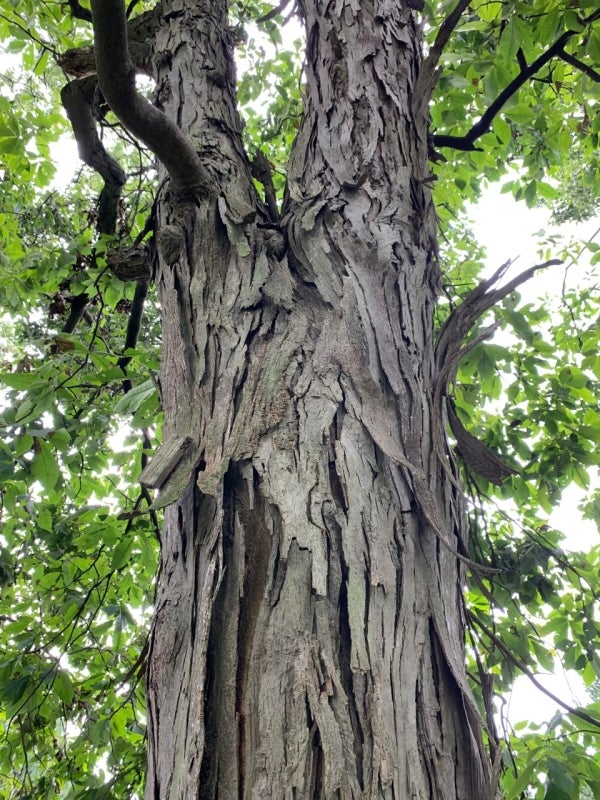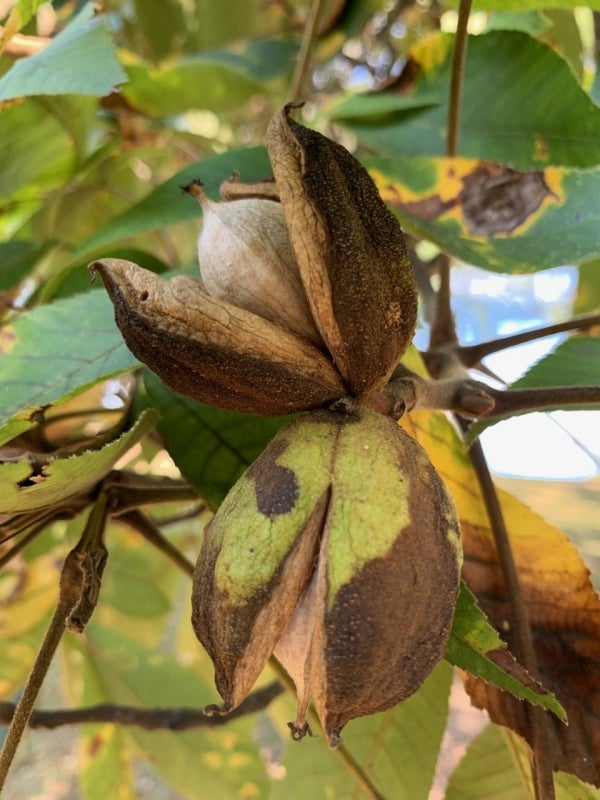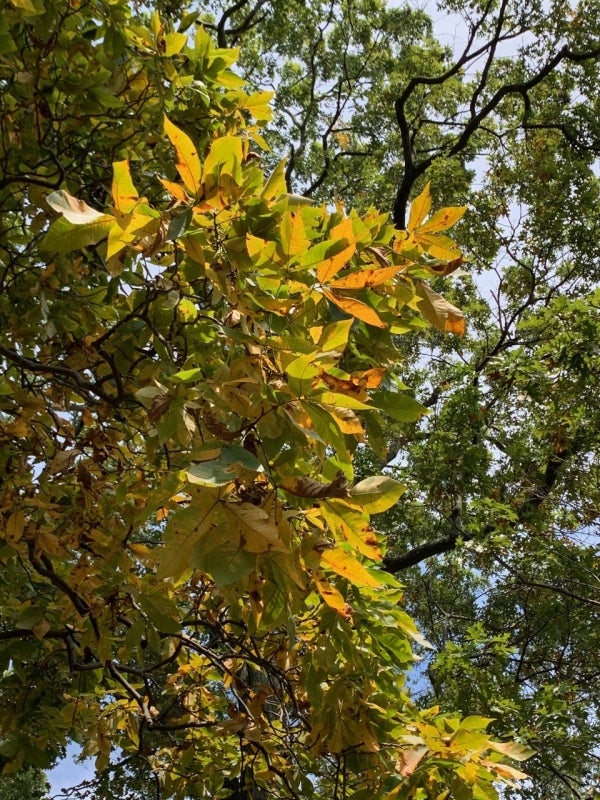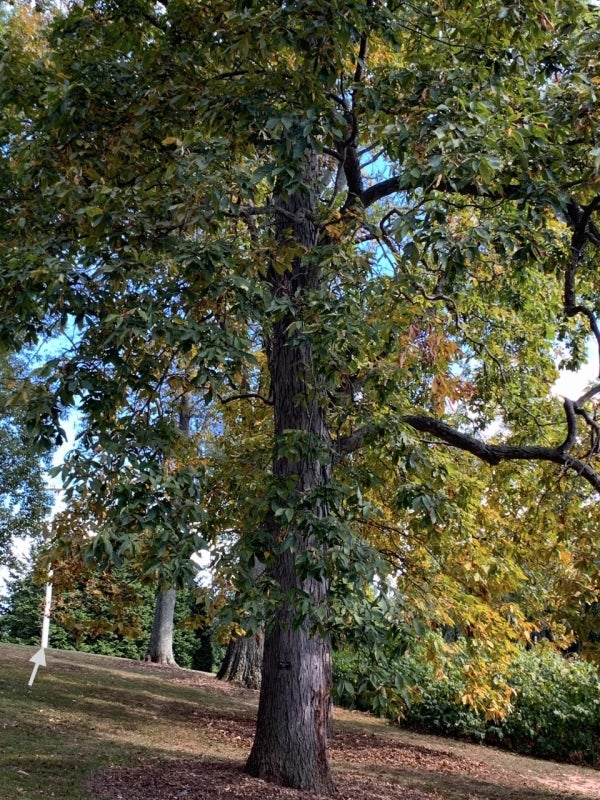Blog



Carya ovata (shagbark hickory) is a large deciduous tree that is easy to identify all year round because of its eye-catching shaggy mature bark. In the fall, shagbark hickory is also notable for its warm golden-brown leaves and sizable edible nuts. It is one of the five hickory species native to Pennsylvania.
The genus name Carya is the Greek name for walnut, and in Greek mythology Laconian princess Carya had a love affair with the god Dionysus; after her death, he memorialized her by changing her into a fruitful walnut tree.
The specific epithet ovata means “egg-shaped,” referring to the nut, and the common name hickory was adapted from the Virginia Algonquian word pawcohiccora, referring to a staple food of pounded hickory nuts and water. From 1773–1777 William Bartram, a foremost Philadelphian naturalist, travelled the east coast south of Pennsylvania and described seeing one hundred bushels of shagbark hickory nuts stored at just a single Native American family home. The hickory wood itself was valued as a fuel and for bow-making.
Here are some fun hickory-related experiences to enjoy this autumn:



And some hickory trivia...
When you visit Morris Arboretum, you can see ten labeled shagbark hickories, some of which were original to the Morris estate and accessioned in 1932. (They can live and bear fruit for 300 years.) Don’t be surprised if some of the younger trees have smooth bark—the shagginess develops later. Find their locations at the Arboretum's Collection Connection.
Katherine has her Certificate in Botany from the New York Botanical Garden and is a botanical tour guide and free-lance writer. You can contact her with comments or requests for photos at botanicaltours.weebly.com